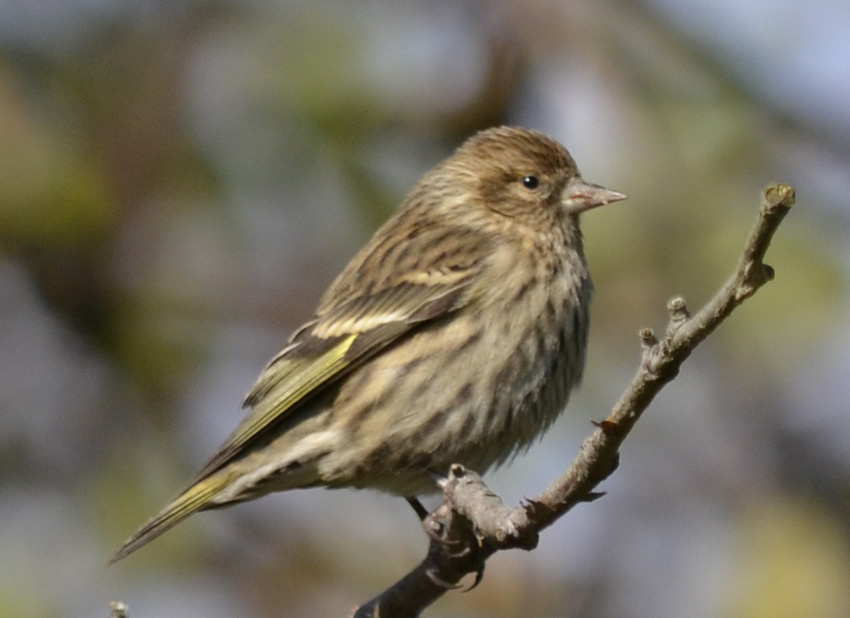

After a while, he lands on a perch next to the female.

The female builds a loose cup nest of twigs, grasses, and rootlets about 15 feet high in a conifer, lining the nest with feathers. During years of huge winter numbers, a few pine siskins may remain in Illinois to breed. Siskins return to their northern breeding grounds in February and March, where they begin courting and choosing mates. Siskins were particularly numerous in northern Illinois during the winter 2008-2009 season, with dozens and dozens being seen at backyard feeders and in conifers at parks, gardens, and yards. Pine Siskins are small birds that are generally streaked brown both above and below, with a touch of yellow on the wings and at the base of the tail. They readily come to feeders filled with thistle seed. Seed crops vary from year to year, and when it's a particularly lean winter, the siskins fly south looking for food. These birds live farther north in coniferous and mixed forests, feeding on seeds of coniferous and deciduous trees such as spruce, birch, and alder in winter. Pine Siskins prefer to forage in upper canopy layers of open woodlands seeking small seeds, insects and spiders, but with their penchant for Nyjer and black. A North American finch (Spinus pinus) having streaked, brownish plumage. Pine siskins belong to a group of birds known as winter finches. Also found in: Thesaurus, Acronyms, Wikipedia. They often sport yellow on their wing bars and tails. Photo by Emily Carter Mitchel via Flickr under CC BY-NC 2.0. The siskins, however, have thinner bills and streaked bodies. Pine siskins make up over 40 percent of the birds seen by the Bird Rescue Center of Sonoma County in recent weeks.

Pine siskins often hang out with American goldfinches, which are similar in shape and size. Gregarious little birds, pine siskins give rising, buzzy, “zreeee” calls as they sit in trees or fly to spruce cones and feeders to dine. Description: Most winters, thanks to volunteer Peter Dogiakos, who fills homemade bird feeders with thistle in the Enabling Garden, Garden visitors can get close views of a northern bird species called the pine siskin. The Pine Siskin, recognized most easily by its characteristic slurp call, is a widespread breeder, usually in coniferous and mixed coniferous-deciduous.


 0 kommentar(er)
0 kommentar(er)
